6.
Distribution characteristics of salt lakesThe distribution of salt lakes has 3 characteristics, include zonal, regional and uniformity.
In our country, the distribution of salt lakes has zonal mainly in a horizontal direction.
The distribution of salt lakes is very uniformity in our country, some regions have many salt lakes, but some regions is almost no salt lakes.
7. Salt lake resources in our country
Salt lake is rich in natural resources in our country, not only have salt deposited resources, also have brine resources, biological resources and tourism resources. Among them, salt deposited and brine are mainly natural resources. In these lakes, there are common salts they include halite, mirabilite, trona, and common development of the national economy urgently, magnesium, potassium nitrate and boron salt, lithium salts and available for comprehensive exploitation and utilization of the Rb and Cs, uranium and thorium precious metal resources, etc.
There are 70 minerals of salt deposits from salt lakes, including 18 Carbonate minerals, 14 borates, 8 chloride minerals, 25 sulfates and 5 nitrate.


Bischofite Halite salt layer
Brine Resources:
Brine Resources, including brine in the surface of salt lake, intercrystalline brine and brine in the Silt. The brine in the surface and intercrystalline brine are the main types.
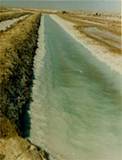
Salt ditch
Brines contain more than 60 species composition in China, and the main chemical composition contain Na+, K+, Ca2+, Mg2+, Cl-, SO42-, HCO3- and CO32-, the Minor components contain Heavy metal element, Heavy radioactive elements and rare alkali metal elements and so on.
Biological resources in salt lakes:
Biological resources include Animals and plants resources. Plants mainly include dunaliella salina, reed, rose willow. Animals mainly include barhead goose, brown Headed Gull, yellow duck, artemia etc.

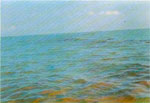
Fish for artemia Artemia in Ebinur Lake
Tourism resources:
Tourism resources are very rich and these region have many tourist attractions, have the greatly attractive. The most tourist attractions is solid salt bridge.



Solid salt bridge
8. How to classify the types of salt lakes?
There are three principles for classifying the types of salt lakes: one is based on the brine existing state, another is according to the salt sediments and the other one is in terms of the chemical components of the brine.
The salt lakes can be classified into brinish lake, dry salt lake and undersand lake based on the principle of brine existing state.
The characteristic of brinish lake is that the superficial brine always exists and the salt sediments can only be located at the lakefront or some central part. The water level in the lake would fluctuate with the seasons changing while the superficial brine would not disappear for ever. The main characteristic of the dry salt lake is that it is existed as dry state almost all the time, and the temporarily superficial brine may emerge only in the humid seasons. The wide dry saltland that was naked in the air was formed due to the persistent subject to wind, rain, intense sunshine as well as evaporation which result in the salt separating out from the brine and lead to the chap of the land surface, just like being ploughed if it is observed from beyond. Take the Qarhan Salt Lake for example, people are often puzzled where the salt lake is because they can not find it while searching for it everywhere. As a matter of fact, the Qarhan salt lake is located in sight or even at where you stand. The Ca Er Han Salt Lake is a huge dry salt lake. Undersand lake is defined as the lake has no superficial brine all the time, the water level is relatively stable owing to the less exchange between the brine and the outer environment, and it will fluctuate minutely on the premise of rain water seeping or salt precipitating out the brine. Another intuitionistic property of undersand lake is that the top layer of salt sediments is covered by clay or quicksand, thus, no replenishment from the surface runoff can be obtained over the whole year.
According to the salt sediments, the salt lakes can be classified into rock salt lake, mirabilite lake, alkali lake, borate lake and potassium-magnesium lake.
In China, the widely used principle for categorizing the salt lake is on the basis of chemical components of the brine. The salt lakes include carbonate, sulphate (Sodium sulfate and magnesium sulfate subtypes) and chloride salt lakes。The chemical compositions of brine display the characteristics of physical and chemical roles and the balance system of water and salts.
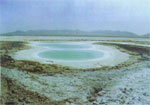
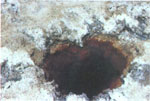
Solution cavity in salt lakes

Stalactitic salt in Qarhan Salt Lake
9. The types of salt lake in China
China not only has a large number of salt lakes but also the types of complete, which completely displays our advantages and characteristics.
According to the chemical composition of the brine, there are carbonate, sulphate and chloride salt lakes in China.
According to the types of mineral salts, China has not only normal but also unusual salt lakes, normal salt lakes include rock salt lakes, mirabilite lakes and natural soda lakes; unusual salt lakes include gypsum lake, potassium-magnesium salt lake, boron lake, lithium lake and nitrate (Potassium) lake that is peculiar in the world.

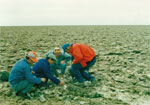
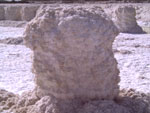

10. The conditions for forming salt lakes
There are three conditions for forming salt lakes: firstly, there must be a closed or semi-enclosed basin catchment; secondly, there must be a rich source of salinities in the basin catchment; thirdly, there are climate fluctuations under the persistent drought for the basin catchment with a rich source of salinities.